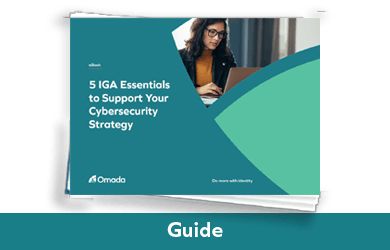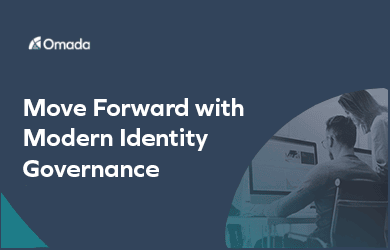The digital transformation across every business, intensified by the COVID-19 crisis with more remote workers, has expanded the cybersecurity threat landscape. To respond to these new challenges, the European Union (EU) has enacted the NIS2 Directive, a more comprehensive version of the NIS Directive, the EU’s first cybersecurity law. NIS2 is a revised set of future-proof rules created to strengthen the resilience of network and information systems in the EU against cybersecurity risks.
How NIS2 strengthens the existing NIS Directive
NIS2 builds on the NIS framework by enhancing the scope, framework, and penalties to help improve cybersecurity for critical infrastructure. In addition to operators of essential services and digital service providers covered by NIS, the NIS2 directive broadens the scope to cover a wider range of entities and services, including online platforms, cloud computing services, and search engines. It also introduces mandatory incident reporting for a wider set of organizations, sharpens focus on supply chain security, and establishes security requirements and standards like multi-factor authentication which help enhance cybersecurity.
NIS2 strengthens the NIS regulatory framework by specifying roles and responsibilities for different authorities, including the designation of competent authorities in member states to enforce the directive. NIS2 also allows for more substantial fines and other measures for non-compliance.
NIS2 mandates that organizations develop and maintain cybersecurity incident response and recovery plans and introduces specific requirements for manufacturers, importers, and distributors of IoT devices.
While the primary focus of NIS2 is on cybersecurity overall, it has implications for identity governance and administration (IGA). Here are some ways the new NIS2 requirements can drive organizations to adopt modern IGA solutions:
Enhance security
NIS2 establishes security requirements for operators of essential services and digital service providers. To meet these requirements, organizations should strengthen their IGA processes. This means bolstering identity lifecycle management to ensure users’ access rights as they join the organization, move departments, change roles, and leave the organization.
Effective identity management is critical to mitigating the threat of users getting unauthorized access to systems, applications, and sensitive data such as financial information or privacy data. A modern IGA solution enables organizations to utilize policy-driven access rules and defined roles to automate provisioning and de-provisioning of users’ access.
In addition to satisfying legal requirements, the process of governing identities and their access with modern IGA promotes cost reduction by streamlining identity lifecycle processes for employees, business partners, contractors, and customers.
Improve incident response and reporting
NIS2 mandates that operators of essential services and digital service providers must report security incidents. Effective incident response often involves tracking and managing the identities of individuals who have access to compromised systems. Modern IGA can help in understanding who had access and what actions they performed during the incident. A modern IGA solution enables an administrator who has detected a breach to perform an emergency lockout and use the intelligence acquired in the investigation to address future security threats.
Optimize cross-border collaboration
The NIS2 Directive encourages cross-border collaboration on cybersecurity issues. Modern IGA facilitates managing user identities across borders to ensure compliance with various data protection regulations. The configurability and connectivity functionality of a modern IGA solution enables organizations to secure cross-border data sharing and collaboration.
Bolster user accountability
IGA plays a critical role in establishing and enforcing user accountability. The NIS2 Directive mandates that organizations must take measures to prevent and minimize the impact of security incidents. A modern IGA solution can help track user actions, which is important in determining the cause and extent of a security breach.
More effective compliance and auditing
The NIS2 Directive includes requirements for auditing and compliance reporting. A modern IGA solution continuously monitors the integrity of data and evaluates the accuracy of implemented processes on demand. This assures auditors that rules and policies are being enforced. Modern IGA enables organizations to demonstrate that they have applied the appropriate governance control and minimized the risk of non-compliance.
Stronger data protection
IGA is closely tied to data protection, and NIS2 emphasizes the protection of personal data. NIS2 is different from GDPR in that GDPR was created to strengthen data protection and protect individual privacy rights for all European companies. In contrast, the NIS2 Directive is designed to improve the security resilience of information systems and networks across the European Union member states for specific segments deemed critical such as healthcare, finance, and energy. A modern IGA solution ensures that access to personal data is managed appropriately and that only authorized personnel have access, thus ensuring NIS2 compliance.
Better response to technological innovation
NIS2 acknowledges the evolving nature of cybersecurity threats and encourages the use of advanced security technologies. SaaS-based modern IGA solutions are sufficiently dynamic to meet future security challenges and incorporate advanced authentication and authorization mechanisms that enhance overall security.
As we mentioned, while the NIS2 Directive primarily focuses on cybersecurity, it indirectly promotes the implementation of robust identity governance and administration practices. To comply with NIS2 and bolster its security posture, organizations operating in the European Union must be able to demonstrate that they have policies, procedures, and technologies in place to govern access, control identities, and report on any violations. The accomplish this, they must have a modern IGA solution in place to enable their IT departments to apply best practices to managing and governing all user access rights across a hybrid IT environment of on-premises and cloud-based enterprise systems.
Need to migrate modern IGA quickly to help with NIS2 Directive compliance? Omada can help.
Migrating to a modern IGA solution and implementing best practice standard processes for identity management and access governance ensures your organization can satisfy all security requirements related to identity governance and administration across hybrid IT environments. Using a defined process enables you to make IGA the strongest link in your cybersecurity chain. Time, however, is not on your side – but Omada can help. In as little as 12 weeks, you can have a modern IGA that contributes to NIS 2 Directive compliance. Are you interested to learn more?

























